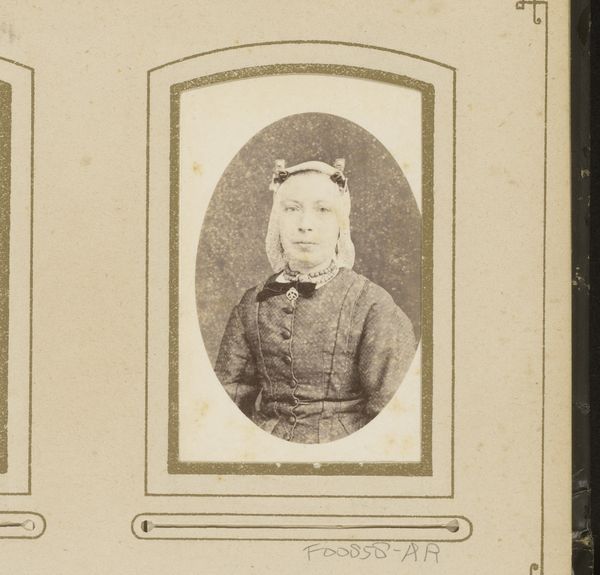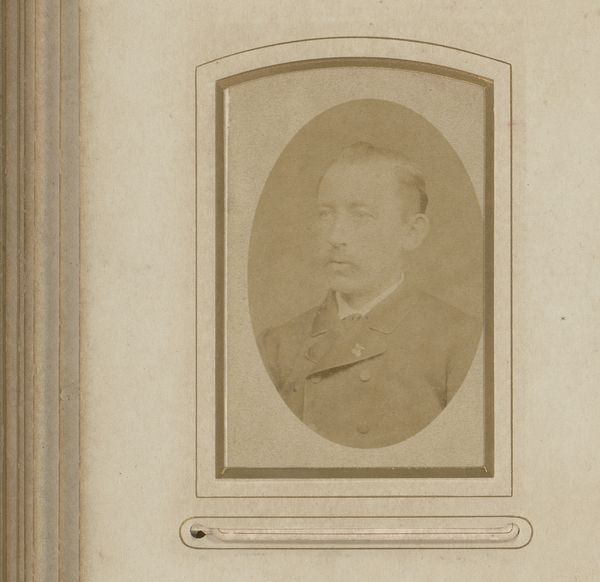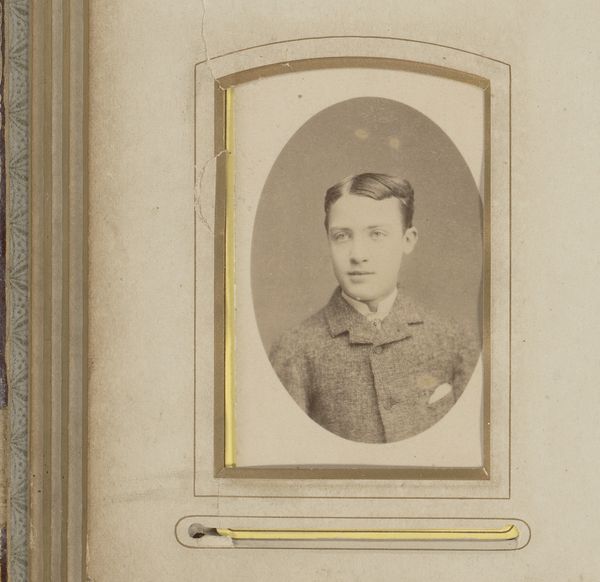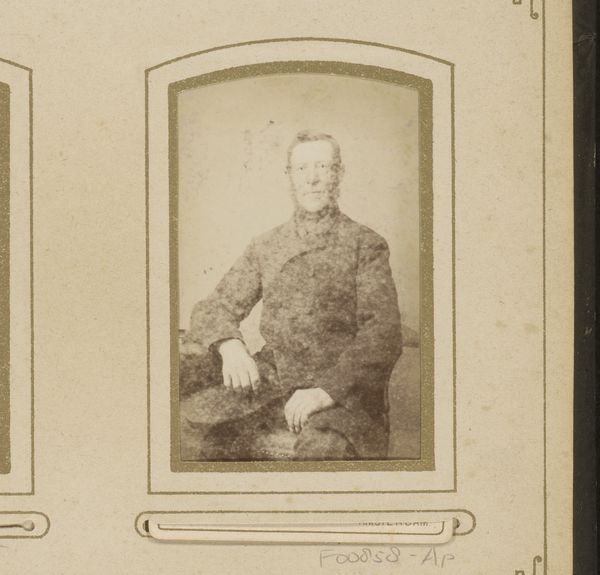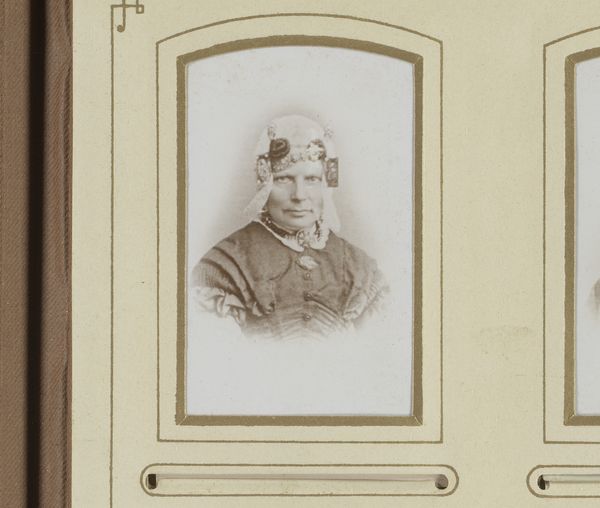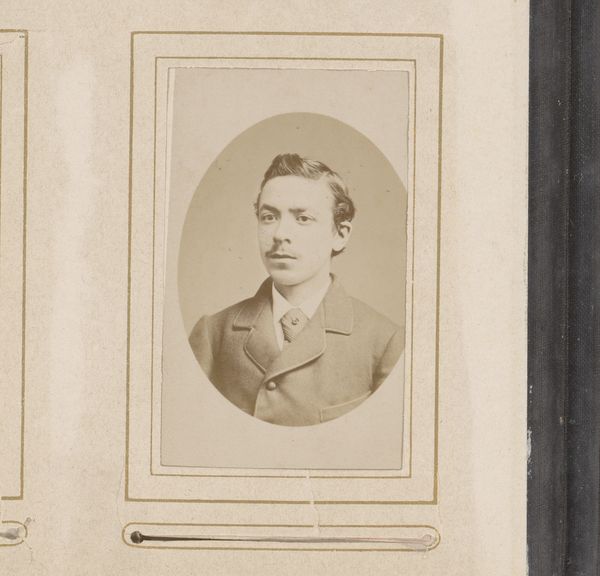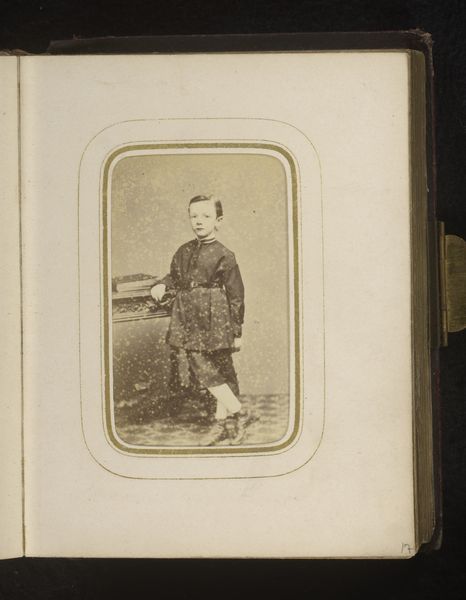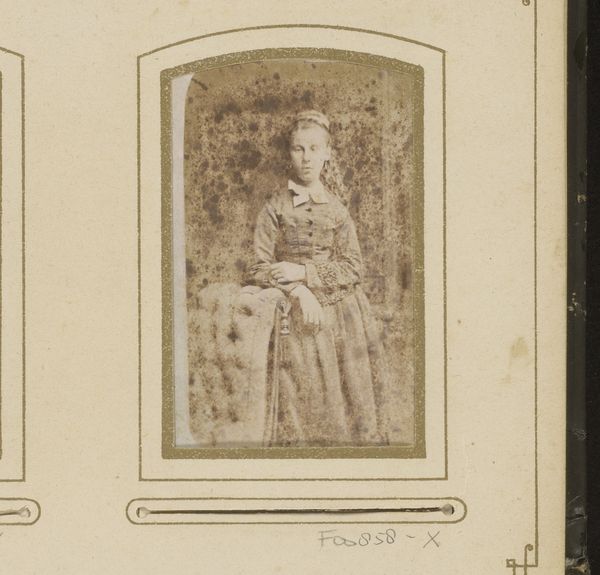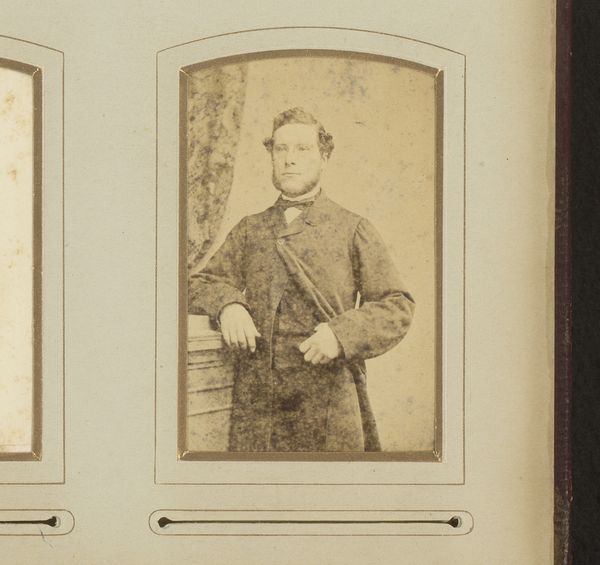
photography
#
photography
#
19th century
Dimensions: height 83 mm, width 50 mm
Copyright: Rijks Museum: Open Domain
Editor: This is "Portrait of a Woman with Bonnet," taken sometime between 1867 and 1878 by Anthony Martinus Hayo Polman, made using photography. It's interesting, she seems formally posed but not necessarily affluent, based on her clothing. What's your take? Curator: I see the image primarily as a product of its time. The photographic process itself was still relatively new, demanding specific conditions and skills. Think about the labor involved: the preparation of the chemicals, the handling of the camera, and the long exposure times that dictated the subject's stillness. Even the materials – the specific type of photographic paper and the chemicals used in its development – played a crucial role in shaping the final image and its degradation over time. Do you see that materiality? Editor: Definitely. So it’s less about the woman and more about the mechanics of image-making? Curator: Not entirely, but we must consider the social context that made this kind of portrait possible, who had access, what processes did the professional have to dominate. Consider how this portrait, likely commissioned by the woman or her family, was a form of commodity and of labor, part of the rising middle class's desire for representation and self-fashioning. The woman's bonnet and dress are not just adornments but material objects produced by garment industries operating within a specific economic system. Who had to do work to achieve that material? Editor: That's a point I hadn't considered, seeing the clothing as another step in production. So, her clothes become representative of wider economic forces. Curator: Exactly. By examining the means of production, the labor, and the material conditions, we gain a deeper understanding of the image's cultural significance. The final image presents a woman. What kind of labor did it take to accomplish this presentation? What does the final product mean to its context? Editor: I never would have thought of photography in this way. Thanks for shining a light on that. Curator: And thank you for thinking deeply with me. Every new technology leaves behind these sorts of social material markers, the study of which gives new insight into historical moments.
Comments
No comments
Be the first to comment and join the conversation on the ultimate creative platform.
